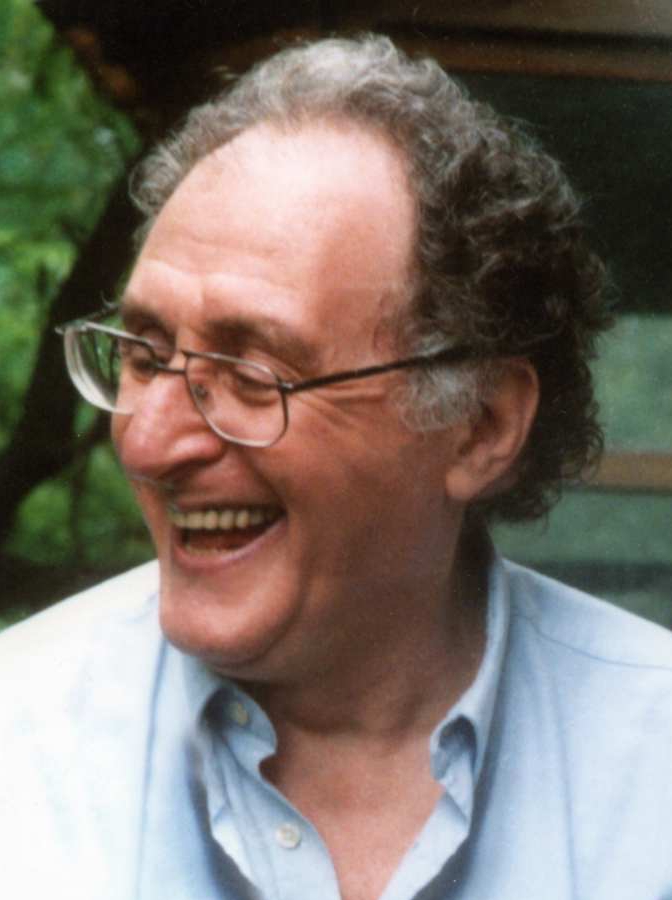Alexander Slutskin, DSc.
21.04.1937 - 29.05.2007

PhD Phys & Math, Kharkov Institute for Physics and Technology (KIPT) of NASU,1964.
DSc Phys & Math, ILTPE, 1981.
Research area:
Properties of strongly correlated low-dimensional electron systems; high temperature superconductivity; electron properties of metals; quantum localization in disordered and incommensurate conductive systems; non-linear phenomena and synergetics.
Recently has been predicted and studied:
- Coulomb ordering in electron systems with strong Anderson localization
- an effective lowering of dimension in 2D lattice systems with long-range interactions
- a quasi-nonergodic behaviour in weakly disordered 1D electron lattice systems
Main achievements
Of the 80th: formulation of the theory of the coherent magnetic breakdown in metals (see Phys. Rep., 98(4), pp.189-271 (1983) and the monograph “Conduction electrons”, Moscow, Nauka (1985)).
Current research activities:
Many-electron phenomena in non-Fermi conductors.
Nowadays non-Fermi conductors wherein an interaction between the electrons is strong, and as a consequence of this the conventional charged-Fermi-liquid theory fails, are in the focus of attention. Investigations of these systems carried out during the last two decades revealed fundamentally novel phenomena and structures, which provide magnificent opportunity to create electronic devices with remarkable previously unknown features, including quantum computing. In our theoretical investigations the primary emphasis is placed upon low-dimensional lattice electron systems wherein the inter-electron repulsion suppresses electron hopping and results in formation of a self-localized “frozen” electron phase (FEP). We have studied various important manifestations of this macroscopic state:
- The ground state (GS) and superconducting properties of a layered sd-electron system consisted of wide-band s-electron layers and narrow-band d-electron ones being in the FEP state were investigated. This system was found to possess superconductivity of pure Coulomb origin, the superconducting transition temperature attaining values of the order of d-band width. (A.A.Slutskin and L.Yu.Gorelik, Low Temp. Phys., 19(11), p.852, 1993)
- The low-temperature thermodynamics of 1D FEP (generalized Wigner crystal) was considered. It was studied how heating modifies inherent to 1D FEP a devil-stair case GS dependence of the electron density on the chemical potential. (V.V.Slavin, A.A.Slutskin, Phys. Rev. B, 54(11), p. 8095 (1996)).
- A novel macroscopic phenomenon, charge carrier stripe formation and effective lowering of dimension, was found to be inherent in 2D lattice systems with a long-range inter-particle repulsion. Basing on this fact, a general analytical procedure has been formulated to describe fully the GS of these systems. The conclusion was made that charge ordering into stripes revealed in copper-oxide superconductors can be caused solely by long-range Coulomb hole-hole repulsion. (A.A.Slutskin, V.V.Slavin, H.A.Kovtun, Phys. Rev. B, 61(20), p.14184 (2000))
- It was shown that under strong-Anderson-localization conditions and at sufficiently low electron densities a Coulomb inter-electron repulsion orders localized electrons into a slightly distorted crystal lattice (for the system dimension > 1). A phase transition between this state and the conventional Coulomb glass was found to occur with increasing of the electron density. (A.A.Slutskin, M. Pepper, H.A.Kovtun, Europhys. Lett., 62(5), p. 705 (2003))
- The low-temperature thermodynamics of 2D FEP has been recently studied, taking into account the above-mentioned effective lowering of dimension. We succeeded in resolving this problem in terms of the so-called exactly solvable full six-vertex model. A second-order phase transition between 2D generalized Wigner crystal and a liquid of strongly correlated electron stripes with thermally produced fractures (kinks) was found to take place. The phase equilibrium curve on the plane ‘temperature–chemical potential’ has a sophisticated structure, abutting on the chemical-potential axis at the endpoints of the devil-stair intervals. The charge carriers in the liquid phase turn out to be kinks with a fractional charge. (A.A.Slutskin, H.A.Kovtun, prep. for submission to Phys. Rev. B)
- Recently it has been found that an arbitrarily weak random distortion of a host lattice causes the formation of point defects (frustrations) in the 1D generalized Wigner crystal and breaks down the long-range electron-electron correlation in the GS. This results in a novel “quasi-nonergodic” macroscopic behavior of the system. (A.A.Slutskin, H.A.Kovtun, V.V.Slavin, prepared for submittion to Phys. Rev. Lett.).
Selected publications of the 90es and of the years 2000 -2003
- A.A.Slutskin, M.Pepper, H.A.Kovtun, Coulomb ordering in Anderson-localized electron systems, Europhys. Lett., v.62, no.5, p. 705-711 (2003).
- A.A. Slutskin, V.V. Slavin, and H.A. Kovtun, The ground state of a two-dimensional lattice system with a long-range interparticle repulsion. Stripe formation and effective lowering of dimension, Phys. Rev. B, v.61, no.20, May 15, p.14184-14193 (2000).
- N.Fogel, E. Kovtun, R.Shekhter, and A. Slutskin, Size-quantization controlled tunnelling in metal/semiconductor superlattices, Sov. J. Low Temp.Phys, v.25, no.2, 122-125 (1999) [Fiz.Nizk.Temp. v.25, no.2, 168-171 (1999)].
- V.V. Slavin, A.A. Slutskin, Thermodynamics of a one-dimensional lattice system with long-ranged interelectron repulsion, Phys. Rev., September B15-I issue, v. 54(11), p. 8095-8100 (1996).
- A.A. Slutskin, V.I. Makarov, New approach to description of posistors and varistors conductive properties, in: Proc. of Electroceramics 5, September 1996, Aveiro (Portugal).
- A.A. Slutskin, Frozen" electron phase and high-temperature superconductivity, Uspekhi Fizicheskikh Nauk, v.165, no.6, 1995 [Physics, uspekhi, June 01 1995, v. 38, No 6, page 669].
- A.A.Slutskin and L.Yu.Gorelik, Frozen electron phase in layered conductors and HTS, Sov. J. Low Temp.Phys. v.19 (11), 852-864 (1993) [Fiz.Nizk.Temp. v.19, no.11, p. 1199-1216 (1993)].
Selected publications of the 60es - 80es
- A.A.Slutskin, M.Yu.Gorelik, Quantum localization in one-dimensional quasi-random systems and magnetic breakdown, Sol.State.Comm. v.46, no.8, p.601-604 (1983).
- A.A.Slutskin and A.M.Kadigrobov, Electric domains in metals at low temperatures, Sov.Phys.-JETP Lett.(USA), v.28, no.4, p.201-204 (1978).
- M.I.Kaganov and A.A.Slutskin, Coherent magnetic breakdown, Phys. Rep., v.98, no.4, p.189-271 (1983).
- A.A.Slutskin, Motion of a one-dimensional non-linear oscillator under adiabatic conditions. Sov.Phys. JETP, v.18, no.3, pp.676-682 (1964) [J. Expt. Theoret. Phys. (USSR) vol. 45, p.978-988 (1963)].
